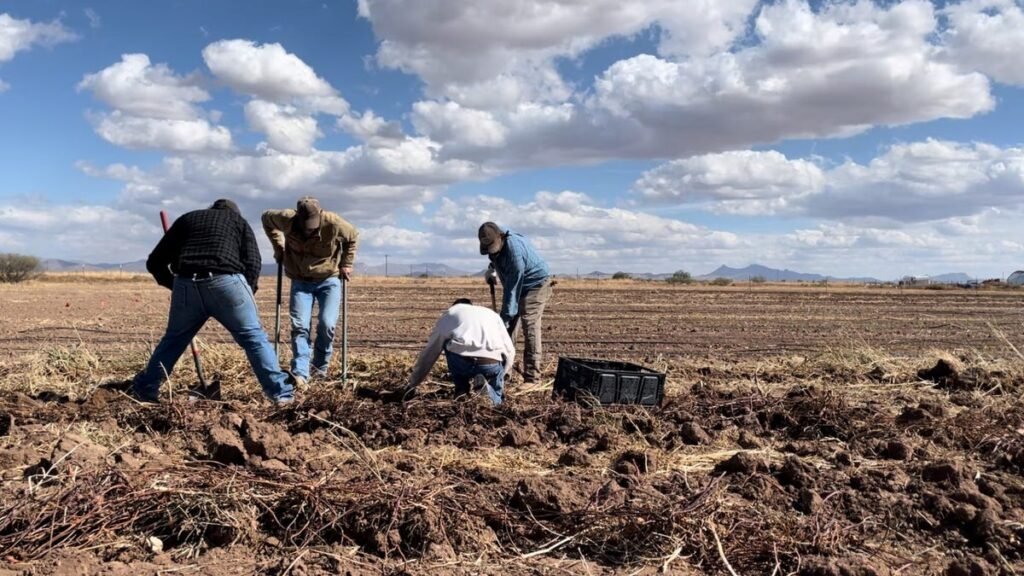Water Regulation Concerns in Willcox
Last week, over 300 individuals gathered at the Willcox Community Center for the second hearing in recent months regarding the Arizona Water Resources Department’s proposal to regulate groundwater, primarily impacting farmers who consume a large portion of this vital resource.
Tom Butzchatzke, the head of the state agency, has until December 23rd to determine if an active management area (AMA) will be created in the Willcox Basin. Previously, such regulations were confined to areas around Phoenix, Tucson, Prescott, Pinal, and Santa Cruz counties.
The community is understandably anxious about the potential outcomes.
Jesse Davis, who operates a long-standing ranch in Graham County, mentioned that the water levels there were only slightly declining, yet he expressed concern that state intervention could decrease his land’s value by 60%. It’s important to note that water levels aren’t consistently dropping across the basin; the proposed AMA boundaries may affect nearby settlements and agricultural producers within the Bonita region in similar ways.
Johngrafio, a retired veteran living near Turkey Creek, had hoped to reside in northern Arizona for the rest of his life, but lamented that he observed a startling drop of ten feet in his water levels over the course of just one year.
Under the proposed AMA, agricultural entities like Curry Seed and Chilean companies would be limited to growing low-water crops, specifically on about 1,000 acres. However, Ed Curry, the owner, believes that while the AMA is not perfect, it represents a necessary step until better solutions are found.
Two years ago, residents from eastern Cochise County were asked to vote on the establishment of an AMA in the Douglas and Willcox Basins, resulting in only the Douglas AMA receiving approval. Depending on the current conditions of water levels and land subsidence, it’s possible that the Willcox Basin may also become involved in the AMA.
There are significant concerns regarding water management in the Willcox Basin. Reports indicate a stark increase in groundwater extraction, with 29 wells reported dry over the last decade. In various locations, some water levels have decreased by up to 400 feet, and land has sunk 11.5 feet as a result of groundwater mining since 1969. Alarmingly, a state geological survey identified 50 miles of cracks in the earth, posing risks to infrastructure.
During the hearings, residents outside voiced their deeply held worries about declining groundwater levels, recognizing the urgency of the issues at play. However, many stressed that the AMA might not offer the best solution without additional strategies.
Legislative efforts to impose groundwater regulations have faced ongoing challenges over the years, with previous attempts garnering no hearings before the House Natural Resources and Agriculture Committee. Although bipartisan initiatives aimed at creating alternatives to existing rural groundwater regulations were attempted in the last session, they ultimately didn’t succeed. Lawmakers from both parties have indicated a desire to return to discussions before the upcoming legislative session.
“The AMA is detrimental for my situation,” Curry stated, pointing out the difficulties of associating historical water usage regulations with the current landscape. The existing regulations dictate how much water is allocated to farmers.
“At the very least, it curtails new drilling, even if it adversely impacts me,” he added.
Opposition to AMA Framework
Many object to the proposed AMA framework, primarily due to concerns over how it might affect property values. A group opposing the AMA was formed to address these concerns since it was introduced in 2021. However, some members have now shifted their focus to the Sulphur Springs Water Alliance as discussions around solutions to groundwater issues evolve.
The potential realities of the AMA for the agricultural community have undergone preliminary testing in the Douglas Basin, where the management plan is still pending approval. Farmers can utilize allocated water with flexibility, though an appointed committee has been criticized for lacking adequate representation of community interests.
One of the strongest demands from opposition advocates is to have a locally elected council. There is a widespread fear among residents that urban areas may dominate water use, stripping rural communities of their resources.
“New laws are necessary for enabling water transfers from other basins,” Ferris remarked, indicating that the current limitations deter meaningful action given the conditions in Willcox and Douglas Basins.
Over the years, the water challenges faced by the Sulphur Springs Valley have become increasingly pressing, impacting a range of counties that depend heavily on groundwater for irrigation and daily living.
As residents navigate these tumultuous waters, there’s a growing concern regarding future agricultural opportunities, especially as they face potential irrigation rights limitations if the Willcox AMA is voted through. “We have no history of irrigation in recent years, and we could be talking about losing huge tracts of land,” Davis mentioned, clearly worried about how this might affect not only him but future generations.
The opposition continues to seek clarity and effective solutions. As the situation unfolds, it remains crucial for all stakeholders to engage in productive dialogue to ensure the long-term sustainability of water resources in the region.







